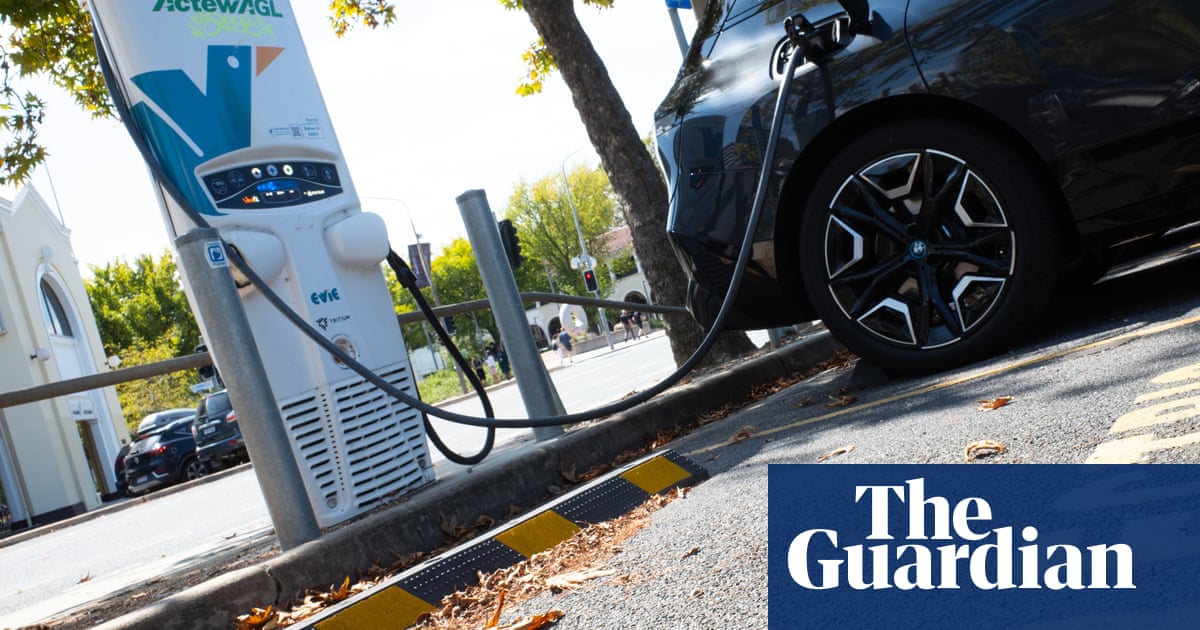The number ofbattery electric vehiclessold in Australia has fallen to its lowest level in two years as Australians continue buying traditional internal-combustion cars or turn to conventional and plug-in hybrids, according to the nation’s peak motoring body.
There were 17,914 new battery electric vehicles sold in the first three months of this year, according to the Australian Automobile Association (AAA), equivalent to 6.3% of all new car sales.
The last time the number of new electric vehicles sold was this low was in the first three months of 2023, when 17,396 cars were sold, the AAA’s quarterly electric vehicle report said.
Sign up for Guardian Australia’s breaking news email
This year’s first quarter figures also represent a decline in market share compared to the final quarter of 2024, when battery EVs made up 7.42% of new car sales with 21,331 sold, the AAA figures showed.
Vehicles with traditional internal combustion engines continued to dominate even though they too dropped in popularity, with 206,810 sold in the March quarter, or 72.68% of all new car sales.
In the final three months of 2024, 215,789 cars with internal combustion engines were sold, working out to 75.1% of the market, the AAA’s report said.
At the same time, however, sales of conventional hybrid cars – which combine a petrol or diesel engine with an electric motor – and plug-in hybrids, which also contain a chargeable battery – boomed.
The number of plug-in-hybrids sold nearly doubled to 13,698 – 4.81% of the market – in the first three months of this year compared with 7,556 sales – 2.63% of the market - in the final quarter of 2024.
The number of conventional hybrid vehicles sold increased from 42,618 to 46,115 over the same period.
To compile its reports, the AAA says it collates information from a range of sources including car sales data from two peak manufacturing bodies – the Federal Chamber of Automotive Industries and the Electric Vehicle Council.
Overall, car sales fell by 0.96% in the March quarter, the report said.
The decline in the number of electric vehicles sold came in the immediate wake of thefederal government’s national vehicle efficiency standardcoming into effect on 1 January.
Introduced by the Albanese government in its first term, the standard is designed to bring more fuel-efficient cars into the market by penalising manufacturers of high-polluting vehicles if they exceed an emissions cap.
The cap – which the government has said will be lowered over time – applies to new cars, in an effort to incentivise carmakers to supply low-and zero-emissions vehicles to Australia.
It was expected the standard would lower the cost of electric vehicles by making it cheaper and easier to bring them into the market.
The government has said the standard will reduce greenhouse gas emissions from new passenger vehicles by more than 60% by 2030.
The standard forms part of the government’s plan to achieve its commitment to lower greenhouse gas emissions to 43% below 2005 levels by 2030 and achieve net-zero emissions by 2050.
The climate change and energy minister, Chris Bowen, has been contacted for comment.
